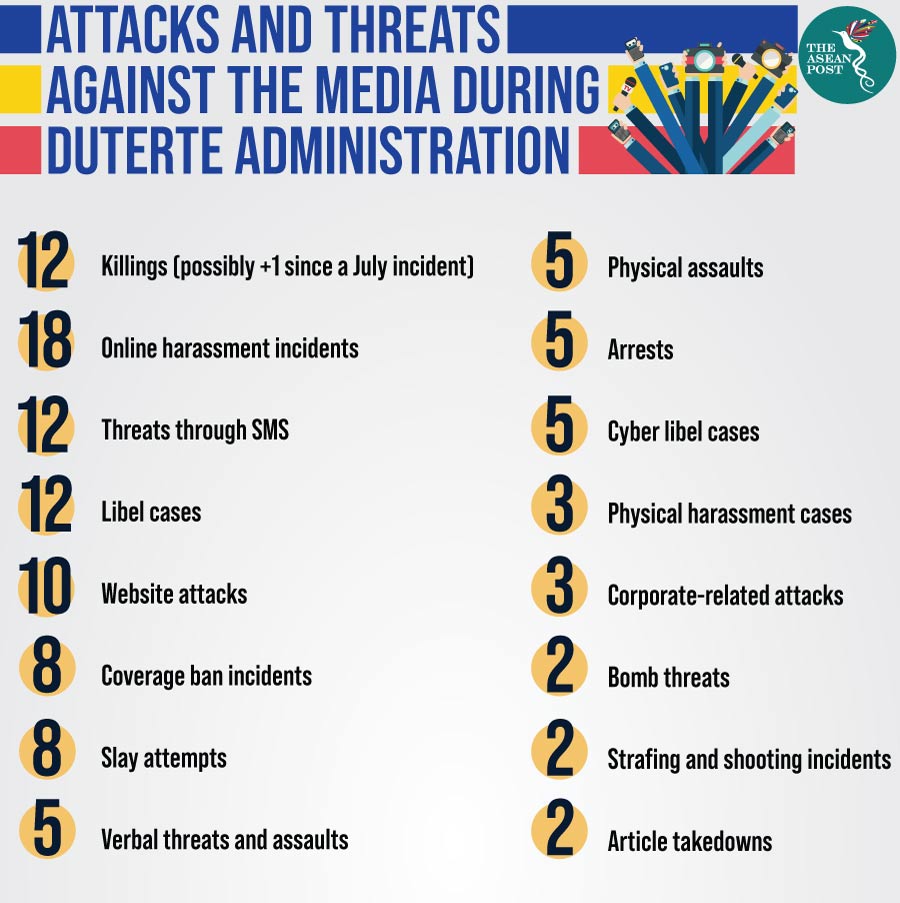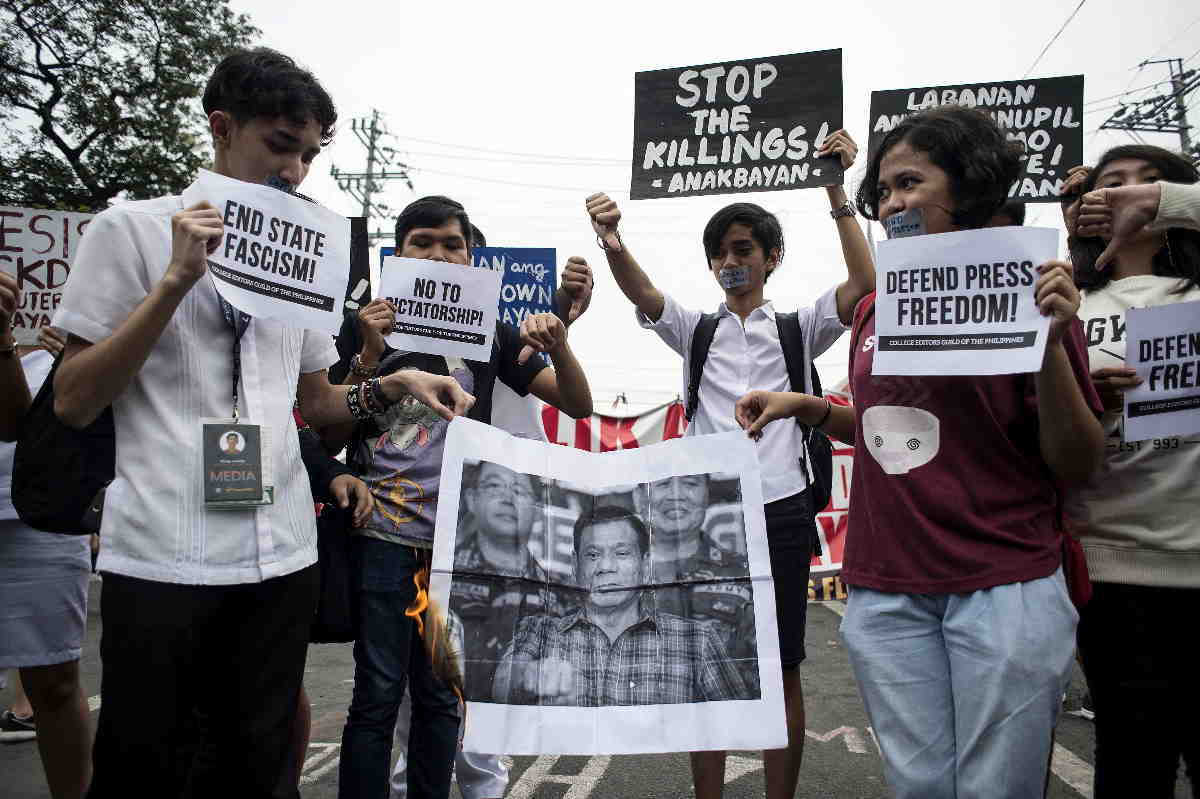The top official of the Presidential Task Force on Media Security (PTFoMS) in the Philippines recently told local media that the Duterte administration remains committed to ensuring the safety of journalists in the country. Undersecretary Jose Joel Sy Egco, executive director of the PTFoMS which is under the Office of the President, said the task force’s top mandate is to protect the lives, liberty and security of media practitioners.
“If you feel there is danger or somebody is even joking to kill you, you can call the task force,” Egco said during a press conference on the side-lines of the Presidential Communications Operations Office Roadshow on Freedom of Information and Media Security at the Cebu Normal University in Cebu City.
Despite Jose’s claim that the Duterte administration was committed to the safety of journalists, Philippine journalists are less than convinced.
On 3 May, in a presentation during a press freedom forum by the Freedom for Media, Freedom for All Network, former dean of the University of the Philippines College of Mass Communication Luis Teodoro said that from 30 June 2016 (the inauguration of Philippine President Rodrigo Duterte) up to 30 April 2019, they have monitored at least 128 threats and attacks against members of the press.
According to Teodoro, the rate of harassment and assaults has so far been unprecedented. This was despite the fact, he noted, that during President Gloria Macapagal Arroyo's 9-year term as president, 32 journalists were killed in the Maguindanao massacre. Meanwhile, during the administration of President Benigno Aquino III, 31 journalists were killed.
"As far as instance of occurrences, however our concern, the present administration beats them all," Teodoro, who is a member of the Center for Media Freedom and Responsibility (CMFR) Board of Trustees, was reported as saying.
The Freedom for Media, Freedom for All Network is composed of CMFR, the National Union of Journalists of the Philippines (NUJP), the Philippine Press Institute, MindaNews, and the Philippine Center for Investigative Journalism.
In July, a radio host from the southern Philippine island of Mindanao was shot dead late at night. A day later, NUJP said that if Eduardo Dizon's murder was found to be tied to his work at an FM radio station in the city of Kidapawan, he would be the 13th journalist killed since Duterte came to power.

“Journalists can be assassinated too”
“Just because you're a journalist you are not exempted from assassination, if you're a son of a b****. Freedom of expression cannot help you if you have done something wrong.”
These were not the words of some random serial killer. These were, in fact, the words spoken by Duterte when he was sworn in as president in June 2016.
In 2017, according to Reporters Without Borders, four journalists were killed, making the country one of the most dangerous in the world for journalists. Reporters Without Borders claims that these journalists are often killed by private militias hired by local politicians.
Nevertheless, it was also under Duterte’s administration that the PTFoMS was formed in October 2016. In 2018, Reporters Without Borders dropped Philippines out of the top five most dangerous countries for journalists.
Presidential Communications Operations Office (PCOO) Secretary Martin Andanar attributed the country’s delisting to President Rodrigo Duterte's show of concern to the country’s Fourth Estate.
“The creation of the PTFoMS has resulted in the relentless pursuit of justice for journalists who were killed in the exercise of their duty, and the security of those media men and women who have been harassed and threatened. We will continue to work hard for the safety of our journalists in the name of Press Freedom. There is no stopping the present administration from defending the rights of journalists’ who are vulnerable to threats, often in direct reprisal for their reporting,” Andanar said in a statement.
But how much of this is true? Are journalists in the Philippines now safe under the caring hands of the PTFoMS? The country’s freedom of the press rankings may continue to improve, but what of the actual safety and security of its journalists? If Dizon’s murder is anything to go by then it’s likely journos in the Philippines will have to continue watching their backs. Ultimately, however, it is PTFoMS who will have to answer for the next killing.
Related articles:
